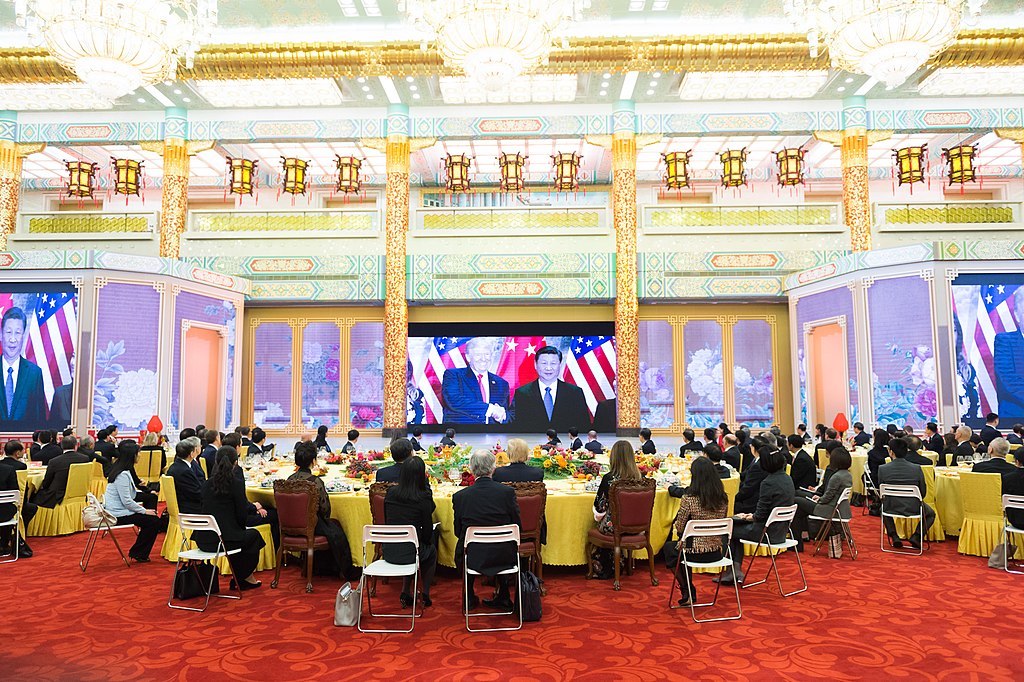As Trade Dispute Continues, the Electronics Industry Pins Hopes on October Meetings
Tariffs and continued trade tensions between the US and China push attention to other manufacturing regions and highlight the need for a unified North American trade agreement.

Tensions continue between the US and China as the ongoing trade dispute continues into its second year. The electronics industry has significant interests in these geopolitical events, as materials, components, and finished electronics products have been subject to escalating tariffs. As of mid-September, the US has applied $550 billion in tariffs to goods from China and China has applied $185 billion in tariffs on goods from the US. The Consumer Trade Association (CTA) estimates that tariffs have cost the electronics industry alone $10 billion since July 2018. This impact has significantly affected manufacturers of connectors, cable assemblies, and other electronic parts and components. New tariffs imposed on September 1, 2019, further expand the impact to finished consumer electronics, putting additional pressure on materials and components manufacturers.
A positive sign arrived on September 11, when China issued exemptions for 16 categories of products, valid for one year. Electronics were not among the products on the exemption lists, although some electronics manufacturers may benefit from the exemption of solvents and lubricating oils that are on the lists. These exemptions, the first waivers issued since the trade dispute began more than a year ago, may signal a coming easing of tensions. In early October, trade representatives from both countries plan to meet in Washington DC in hopes of de-escalating the dispute. US President Donald Trump expressed optimism that these talks will be fruitful, saying, “China called last night our trade people and said, ‘Let’s get back to the table’ so we’ll be getting back to the table, and I think they want to do something.” Trump tempered this by saying that he regrets not imposing higher tariffs, and if talks are unsuccessful, such action could become a reality.

Trade representatives from the US and China plan to meet in Washington DC in early October in hopes of de-escalating the trade dispute.
To protect against that possibility, businesses across all industries in both countries are making investments in new regions. Emerging manufacturing regions such as Indonesia, Malaysia, India, Philippines, and Vietnam are seeing new attention from US-based companies as business looks to diversify beyond China. Imports to the US from Vietnam alone have increased 30% in 2019. China has replaced US agricultural imports with new sources of grains and animal products from Russia.
For US companies, overseas production facilities pose logistics costs and delays, which has led some companies to turn to nearby Mexico, especially since labor costs have become similar to overseas countries. A Mexican factory worker can expect to make $4.70 per day under minimum wage increases that went in effect in 2018. Automakers BMW and Mazda, toy manufacturer Mattel, clothing brand Xcel, and Apple are among the companies that are investing in new production facilities in Mexico. Last year, Mouser Electronics expanded its customer service and support center in Guadalajara, Mexico, and tripled its staff there to accommodate 20+% annual growth in the region in recent years. Cable assembly supplier NAI also expanded its operations in Hermosillo, Mexico, last year and connector and cable assembly supplier Leoni recently announced plans to expand its wire and cable facility in Cuauntémoc, Mexico. These developments make it essential to complete negotiations on the US-Mexico-Canada trade agreement (UMSCA), a proposed replacement for the North American Trade Agreement (NAFTA) and the dissolved Trans-Pacific Trade Partnership (TTP).

Leoni is expanding its Wire & Cable Solutions Division facility in Cuauhtémoc, Mexico, by 7,000 square meters, with the option for an additional 3,000 square meters, to better support the electromobility industry. The expanded facility will increase production capabilities for both EV charging cables and Hivocar high-voltage cables for alternative-drive vehicles.
The US Congress has returned from its summer recess and industry groups are urging the body to ratify UMSCA by the end of 2019. A joint letter signed by Internet Association, the Semiconductor Industry Association, and nine other technology groups urged Congress to act quickly on the new trilateral agreement, which would set global standards for access and usage of digital trade. Talks are expected early this fall.
Connector Supplier last discussed the trade dispute in our June 4, 2019 article “Trade Conflict Intensifies for Electronics Industry.” Here’s a timeline of events that have occurred since.
June 19: The Office of the US Trade Representative (USTR) announces a process by which companies could request the exclusion of certain Chinese products subject to tariffs.
June 26: The US lifted its ban on US companies selling components and software to Chinese telecom company Huawei Technologies.
July 30–31: US Trade Representative Robert Lighthizer, Treasury Secretary Steven Mnuchin, and Chinese Vice Premier Liu He met in Shanghai for two-day trade talks.
August 1: The US announces that it will impose 10% tariffs on another $300 billion of Chinese goods starting September 1.
August 6: China suspends the importation of certain agricultural products.
September 1: The US implements tariffs on more than $125 billion worth of Chinese imports, including shoes, smart watches, dishwashers, and flat-panel televisions.
See the updated harmonized tariff schedule here.
In other trade news, the UK is scheduled to leave the European Union on October 31. Look for an article on Brexit’s impact on the electronics industry from UK writer Caroline Hayes in our October 22 issue.
Connector Supplier and Bishop & Associates will continue to report on this issue as it develops. To gain a better idea of how technology-based companies are affected by tariffs, we’d like to hear from our readers. Drop Ron Bishop a line to share your observations.
For more tariffs-related news in Connector Supplier, check out our previous coverage:
Electronics Industry Joins Effort to Finalize New North American Trade Agreement
- Where in the World is Amphenol LTW’s Luc Kan? - April 23, 2024
- TE Connectivity’s Sustainability Efforts Pay Off - April 23, 2024
- What is a VGA Connector? - April 23, 2024







